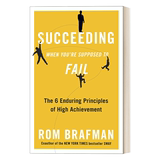Оригинальная движущая сила Huayan's Englar Englar Drive Новые авторы мышления Даниэль Пингк работают английская версия импортированные книги

Вес товара: ~0.7 кг. Указан усредненный вес, который может отличаться от фактического. Не включен в цену, оплачивается при получении.
Описание товара
- Информация о товаре
- Фотографии
| Регулирование: | Движущая сила, Как правильно попросить о помощи, Пиковая цепь поворот, Самостоятельный рост |




Заголовок:Drive: The Surprising Truth About What Motivates Us Движущая сила: в тот момент, когда награды и наказание были полностью признаны, как омолодить энтузиазм людей
Автор:Daniel H. Pink
Название издательства:Riverhead Books
Опубликованная дата:2011
Английский язык
ISBNА9781594484803
Размер товара:15.1 x 1.6 x 22.8 cm
Упаковка: Тихий океан
Количество страниц:272

Drive"Движущая сила"Даниэль, эксперт в тенденции, бестселлер·Новая книга 40 -летней результаты исследований Pinke, он подобрал традиционную концепцию стимулирования:“Дай мне награду, я буду работать усерднее”Предложил теорию подрывного энтузиазма: то, что действительно движет нас, является третьей движущей силой.Он отметил: в эту эпоху движущей силы 3.0 старый способ вознаграждения наказания по стимулированию энтузиазма людей больше не является эффективным. . Вместо автономии, специализации и цели.
Рекомендуемая причина:
1. Автор 50 основных мыслителей мира, лучшая книга «Новое мышление», «Новое мышление», спикер Теда Даниэль·Новая работа;
2. Zhou Hongyi, Yu Yang, Li Houlin, He Zhigang, Wang Lipeng, Chris·Андерсон, Томас·Рекомендация Фридмана;
3. «New York Times», «Wall Street Journal», «Boston Global News», «Washington Post», «Los Angeles Times» лучшие книги;
4. Оригинальная английская версия автора Даниэля·Предисловие Пинке.
Замечательный обзор книг:
“Более десяти лет в интернет -индустрии я никогда не видел, чтобы команда взяла деньги в качестве важного фактора стимулирования Чтобы узнать, продолжайте улучшаться и продолжать стремиться к более высоким целям.Книга «приводится», ярко объясняет это явление, бросая вызов мудрости, присущей людям, и приведет к новой тенденции будущего бизнес -мышления.”——Qihoo 360 Председатель и главный исполнительный директор Чжоу Хонги
“«Привешенная власть» на самом деле является еще одной деконструкцией теории теории уровня спроса Маслоу.Подъем движущей силы X.0 очень похожа на этикетку человеческого общества от сельскохозяйственного общества до промышленного общества и даже эволюционной стадии информационного общества, а также является важным напоминанием о мотивации для постепенного перехода от производственного общества сегодня творческому обществу.Среди них три элемента полного освобождения движущей силы: автономная, специализированная и цель, оно достойно всех согласованных информационных социальных тенденций и в то же время беспокоиться о 80 -х и пост -90 -х годах. -90 -х пост -90 -е.”——Юй Яньян Международный генеральный директор
“Люди всегда являются неконтролируемым элементом на предприятии.Мы больше не живем в возрасте, когда используем деньги, чтобы удержать людей, и используем деньги, чтобы разбить достижения, материальные стимулы попадут только в порочный круг.Когда мы понимаем эти проблемы, действующие на предприятие и запутавшись, эта книга написала все тонкости проблемы.Эта книга подрывает использование большинства предприятий, так что у нас есть новое понимание потенциала и творчества людей!”——Ли Хулин Хирсин Хенгксин Алмазной институт и основатель фонда I Do
“Как сделать работу на работу‘Веселье’Дело не только‘потребности клиента’Как стимулировать членов команды‘Внутренняя мотивация’Больше не полагался на‘Увеличение морковки’Метод представляет собой новую проблему, с которой сталкиваются сегодняшние лидеры.”——Он исполнительный редактор «ИТ -менеджер мира»
“Цель каждого на самом деле одинакова: ведущая жизнь, получение значения и распространение веселья, но некоторые люди будут более введенными.”——Заместитель редактора Wang Lipeng "China Business Daily"
“Какова реальная движущая сила высокой производительности?В книге автор предоставляет нам шокирующий ответ, основанный на научных исследованиях энтузиазма в течение 50 лет.Он указал, что награда потерпела неудачу, и то, что действительно нас управляет автономным, специализированным и целью, что позволяет нам работать лучше и жить более комфортно.”——Крис·Андерсон Автор лучшей книги «Теория длинного хвоста»
“«Driven» - это бизнес -книга, которая мне очень нравится.”——Томас·Фридман "Автор« Мир - это платформа »
Most people believe that the best way to motivate is with rewards like money—the carrot-and-stick approach. That’s a mistake, says Daniel H. Pink (author ofTo Sell Is Human: The Surprising Truth About Motivating Others). In this provocative and persuasive new book, he asserts that the secret to high performance and satisfaction—at work, at school, and at home—is the deeply human need to direct our own lives, to learn and create new things, and to do better by ourselves and our world.
Drawing on four decades of scientific research on human motivation, Pink exposes the mismatch between what science knows and what business does—and how that affects every aspect of life. He examines the three elements of true motivation—autonomy, mastery, and purpose-and offers smart and surprising techniques for putting these into action in a unique book that will change how we think and transform how we live.

Драйв — эксперт по тенденциям и автор бестселлеров Дэниел.•Новые работы Пинке.В книге автор подробно объяснил, как показать энтузиазм людей, когда награды и наказание потерпели неудачу.
В прошлом большинство из нас следовало следующему поведенческому режиму: босс обещал, чтобы мы увеличили зарплату, и наша работа была невозможно получить; Чтобы вычесть зарплату, мы послушно послушно, поэтому мы послушно ходили на работу вовремя……Эта книга расскажет вам удивительную правду: что вас вдохновляет?
Даниэль•Основываясь на исследовании человеческих стимулов за последние 40 лет, это показывает, что внешние меры по стимулируют, такие как морковные палочки, не являются хорошим способом вдохновить себя и других.В книге он рассмотрел три основных элемента движущей силы: автономная, специализированная и цель.В конце каждой главы также предоставляется практическая набор инструментов.
Через большое количество реальных случаев и результатов научных исследований, автор Даниэль•Для всех и каждой организации Пинке указал на три основных элемента того, как повысить производительность в эпоху морковных палочек, чтобы потерпеть неудачу: автономные, специализированные и цели.
Forget everything you thought you knew about how to motivate people—at work, at school, at home. It’s wrong. As Daniel H. Pink explains in his new and paradigm-shattering book Drive: The Surprising Truth About What Motivates Us, the secret to high performance and satisfaction in today’s world is the deeply human need to direct our own lives, to learn and create new things, and to do better by ourselves and our world.
Drawing on four decades of scientific research on human motivation, Pink exposes the mismatch between what science knows and what business does—and how that affects every aspect of our lives. He demonstrates that while
the old-fashioned carrot-and-stick approach worked successfully in the 20th century, it’s precisely the wrong way to motivate people for today’s challenges. In Drive, he reveals the three elements of true motivation:
Autonomy—the desire to direct our own lives
Mastery—the urge to get better and better at something that matters
Purpose—the yearning to do what we do in the service of something larger than ourselves
Along the way, he takes us to companies that are enlisting new approaches to motivation and introduces us to the scientists and entrepreneurs who are pointing a bold way forward.
Drive is bursting with big ideas—the rare book that will change how you think and transform how you live.

Даниэль·Плоский грамм(Даниэль Х. Пинк), эксперт по тенденциям, автор книги «Новое мышление», лучший писатель, «New York Times», «Harvard Business Review», «Quick Company» и «Line», журнал, бывший вице -президент США Горор и написано Административным департаментом Белого дома.Обсудите тему экономических изменений и создание новой рабочей среды в крупных компаниях в мире, университетах и различных ассоциациях.
Автор лучших книг, основные произведения: «Новое мышление», «Страна работников либералов», «История рабочего места в Кайняо», «Талант, ожидающий в будущем».
Daniel H. Pink is the author of five books, including To Sell Is Human and the long-runningNew York Times bestsellersA Whole New Mind andDrive. His books have been translated into thirty-three languages and have sold more than a million copies in the United States alone. Pink lives with his family in Washington, D.C.

INTRODUCTION
The Puzzling Puzzles of Harry Harlow and Edward Deci
In the middle of the last century, two young scientists conducted experiments that should have changed the world— but did not. Harry F. Harlow was a professor of psychology at the University of Wisconsin who, in the 1940s, established one of the world’s first laboratories for studying primate behavior. One day in 1949, Harlow and two colleagues gathered eight rhesus monkeys for a two-week experiment on learning. The researchers devised a simple mechanical puzzle like the one pictured on the next page. Solving it required three steps: pull out the vertical pin, undo the hook, and lift the hinged cover. Pretty easy for you and me, far more challenging for a thirteen-pound lab monkey.
Harlow’s puzzle in the starting (left) and solved (right) positions.
The experimenters placed the puzzles in the monkeys’ cages to observe how they reacted—and to prepare them for tests of their problem-solving prowess at the end of the two weeks. But almost immediately, something strange happened. Unbidden by any outside urging and unprompted by the experimenters, the monkeys began playing with the puzzles with focus, determination, and what looked like enjoyment. And in short order, they began figuring out how the contraptions worked. By the time Harlow tested the monkeys on days 13 and 14 of the experiment, the primates had become quite adept. They solved the puzzles frequently and quickly; two-thirds of the time they cracked the code in less than sixty seconds.
Now, this was a bit odd. Nobody had taught the monkeys how to remove the pin, slide the hook, and open the cover. Nobody had rewarded them with food, affection, or even quiet applause when they succeeded. And that ran counter to the accepted notions of how primates— including the bigger- brained, less hairy primates known as human beings— behaved.
Scientists then knew that two main drives powered behavior. The first was the biological drive. Humans and other animals ate to sate their hunger, drank to quench their thirst, and copulated to satisfy their carnal urges. But that wasn’t happening here.“Solution did not lead to food, water, or sex gratification,” Harlow reported.1But the only other known drive also failed to explain the monkeys’ peculiar behavior. If biological motivations came from within, this second drive came from without— the rewards and punishments the environment delivered for behaving in certain ways. This was certainly true for humans, who responded exquisitely to such external forces. If you promised to raise our pay, we’d work harder. If you held out the prospect of getting an A on the test, we’d study longer. If you threatened to dock us for showing up late or for incorrectly completing a form, we’d arrive on time and tick every box. But that didn’t account for the monkeys’ actions either. As Harlow wrote, andyou can almost hear him scratching his head,“The behavior obtainedin this investigation poses some interesting questions for motivationtheory, since significant learning was attained and efficient performancemaintained without resort to special or extrinsic incentives.” What else could it be?
To answer the question, Harlow offered a novel theory—what amounted to a third drive:“The performance of the task,” he said, “provided intrinsic reward.” The monkeys solved the puzzles simplybecause they found it gratifying to solve puzzles. They enjoyed it.The joy of the task was its own reward.
If this notion was radical, what happened next only deepened theconfusion and controversy. Perhaps this newly discovered drive—Harlow eventually called it“intrinsic motivation”— was real. Butsurely it was subordinate to the other two drives. If the monkeys were rewarded— with raisins! — for solving the puzzles, they’d nodoubt perform even better. Yet when Harlow tested that approach,the monkeys actually made more errors and solved the puzzles lessfrequently.“Introduction of food in the present experiment,” Harlowwrote,“served to disrupt performance, a phenomenon not reportedin the literature.”
Now, this was really odd. In scientific terms, it was akin to rollinga steel ball down an inclined plane to measure its velocity—only to watch the ball fl oat into the air instead. It suggested thatour understanding of the gravitational pulls on our behavior wasinadequate— that what we thought were fixed laws had plenty ofloopholes. Harlow emphasized the“strength and persistence” of themonkeys’ drive to complete the puzzles. Then he noted: It would appear that this drive... may be as basic and strongas the [other] drives. Furthermore, there is some reason tobelieve that [it] can be as efficient in facilitating learning.
















